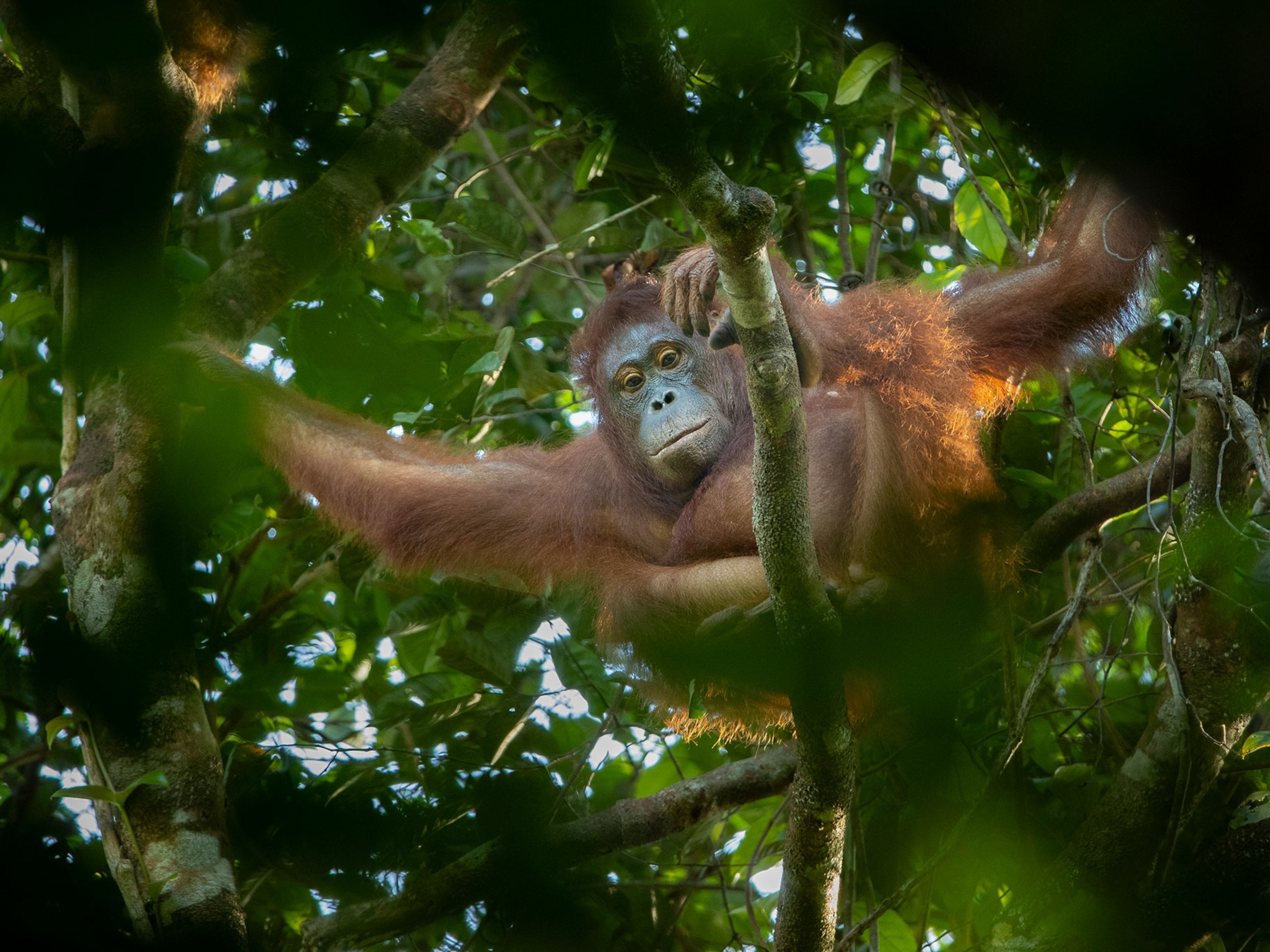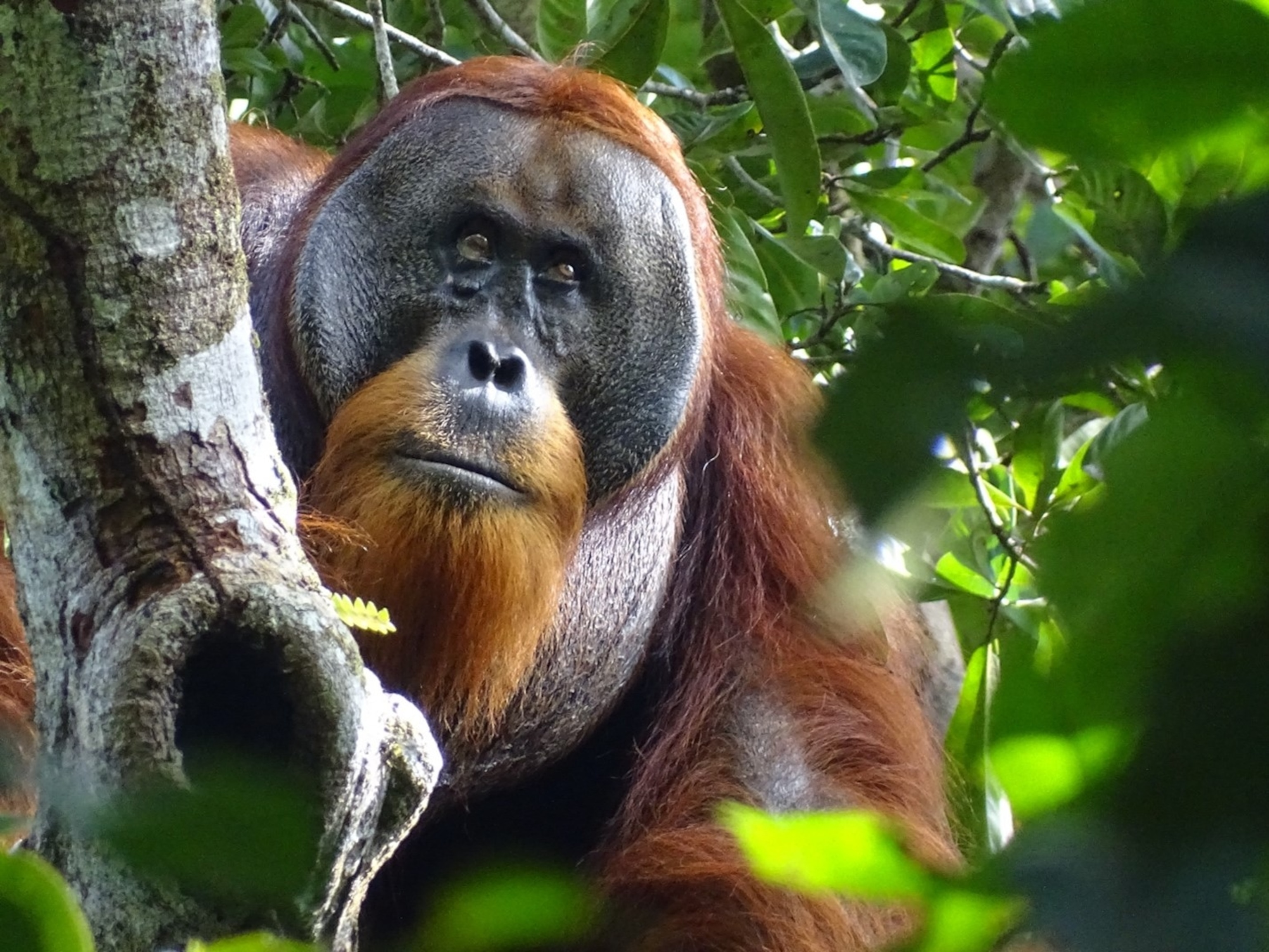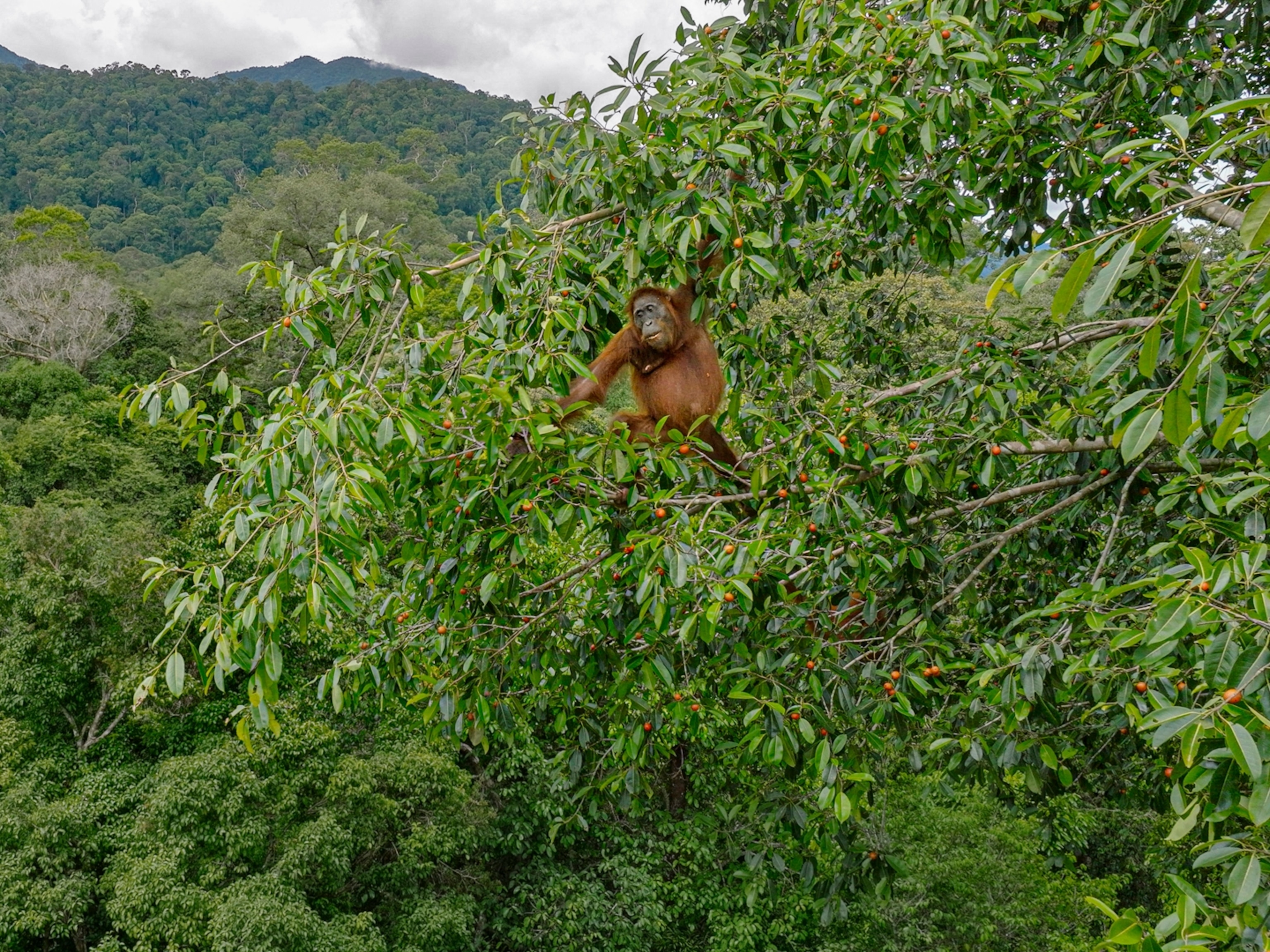
Hundreds of Orangutans Killed Annually for Meat
Villagers hunting endangered ape to extinction in Indonesian region, study says.
People are eating orangutans to extinction in Indonesia, a new study says.
Hundreds of the big apes are hunted annually for meat or to eliminate threats to crops in the country's Kalimantan region (map) on the island of Borneo, according to a survey of 7,000 local villagers.
The survey results suggest that between 750 and 1,790 Bornean orangutans are killed each year in Kalimantan—"high enough to pose a serious threat to the continued existence of orangutans in Kalimantan," according to the study.
There are two distinct species of orangutan, the Bornean orangutan and the Sumatran orangutan. While both species are considered endangered by the International Union for Conservation of Nature, the new study deals with only Bornean orangutans living in Kalimantan.
(See "Up to 2,000 New Orangutans Found on Borneo [2009].")
Scientists estimate that if more than than one percent of female orangutans in a given population are killed in a year, that population will go extinct—a figure that doesn't bode well for the Kalimantan apes.
Assuming that males and females are killed in equal numbers, then between 375 and 1,550 female orangutans—or between 0.9 and 3.6 percent of Kalimantan's total female orangutan population—are killed annually.
People vs. Orangutans
University of Oxford wildlife ecologist Amy Dickman said she was not surprised by the number of orangutans being killed in Indonesia.
Even so, "the amount of killing that goes on is often very surprising to people," said Dickman, who runs a Wildlife Conservation Research Unit (WildCRU) project funded by the Big Cats Initiative of the National Geographic Society, which owns National Geographic News. The project studies conflicts between people, lions, and other large carnivores in Tanzania.
"People are very focused on habitat loss, which they need to be, but that often leads to a tipping point where the wildlife goes into human-dominated land, causes conflict, and gets killed very quickly." (See pictures of wild orangutans in National Geographic magazine.)
Another problem is that people often have the upper hand in run-ins with wildlife, said Dickman, who is not involved in the new study.
"People now have much more deadly ways of responding to conflict," Dickman said.
"They used to just be able to kill animals using simple traps or spears, but now you've got tools such as poisons and AK-47s and explosives, which makes the lethal control of animals much more efficient."
Coexisting With Wildlife
One possible silver lining is that the study found that only a small number of people reported killing an orangutan. Also most people who do kill orangutans in Kalimantan kill only one or a few of the animals in their lifetimes, according to the survey.
"This suggests that most people who kill may do so opportunistically," the authors write in the November 11 edition of the journal PLoS ONE, "and it might be relatively easy to convince people that such killings are no longer socially acceptable."
(See "Orangutans May Be Closest Human Relatives, Not Chimps.")
The University of Oxford's Dickman said one key to stopping human-wildlife conflicts is to provide people with the means to coexist peacefully with animals.
For example, in Tanzania, Dickman's WildCRU group helped villagers obtain improved livestock enclosures. This action has reduced the rates of livestock attacks by large carnivores from an average of two a week to zero.




